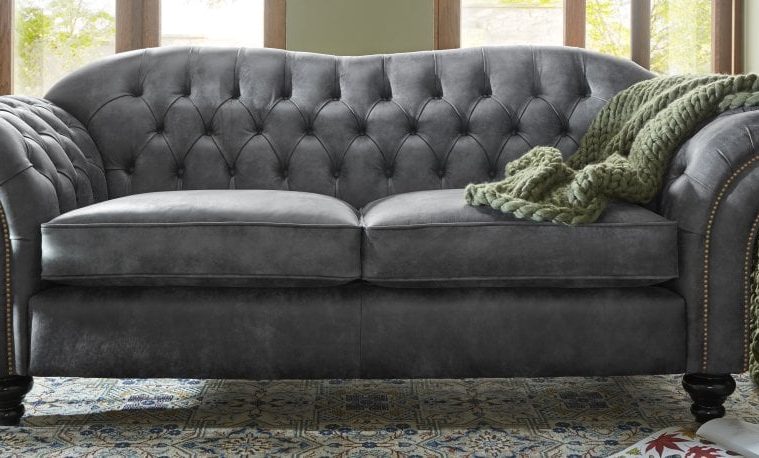Although artificial leather is available in the market due to its cost-efficiency, it can never replace genuine, natural leather, which has its unique charm. When you use natural leather to make upholstrery for furniture, it adds to the décor.
Natural leather is soft and supple as it is made from rawhide, which manufacturers generally source from many European countries. European rawhide is preferred because the cattle there are raised in small herds and are not branded (it spoils natural hide) or marred by barbed wire.
Aniline Leather for Upholstery
Aniline leather is probably the most expensive leather as it is made from selected rawhides. This type of leather matures with age, and the look and feel are also enhanced with age. The natural patina in genuine leather stands apart and can be instantly recognised by connoisseurs.
Furniture upholstery made from genuine aniline leather ages gracefully and lasts a lifetime. Small scratches may be distinct initially, but with time, aniline leather tends to absorb it. With a unique ability to breathe, upholstery made from this leather offers superior comfort and does not generate heat (it absorbs the heat) even if you sit for a long time.
Pigmented Leather for Upholstery
Experts recommend pigmented leather because of its resistance to scuffing and fading. It is best for high traffic environments as it is most durable and perfect for upholstery for furniture and car upholstery.
Also known as protected leather, pigmented leather owes its name to coloured pigment applied on the surface to give it a uniform appearance. It is devoid of any natural markings and is sought after by most upholstery manufacturers due to its high lightfastness and durability. Pigmented leather owes its durability to the polymer surface coating and the pigments used in the process.
Although the thickness of pigmented leather can vary, the recommended thickness is 0.15mm, which is the standard thickness of any natural leather. Some manufacturers offer full-grain pigmented leather where the grain surface is left as it is, and the coating is applied over it.
You may also find corrected grain pigmented leather, where the surface coating is applied only after the imperfections on the hide are removed. Any grain pattern can be embossed on the surface to enhance the look and feel.
Semi-Aniline Leather for Upholstery
Semi-aniline leather is suitable for upholstery subject to heavy traffic and doesn’t fade when exposed to direct sunlight. The colour is consistent, and semi-aniline leather ages gracefully. Semi-aniline leather can be processed to achieve a uniform finish without losing its natural sheen and feel of genuine leather.
Scratches are not very obvious and tend to blend into the background. Even after semi-aniline leather is coated with any pigment, it retains the natural smoothness and even colouration, and the leather also maintains its breathability. Semi-aniline leather is preferred for making upholstery for furniture for commercial use and cars because of its durability and resilience.
Summing it Up
Upholstery, made from natural leather, has its charm despite the higher price it commands. Compared to synthetic material, people prefer leather for the comfort and durability it offers.

